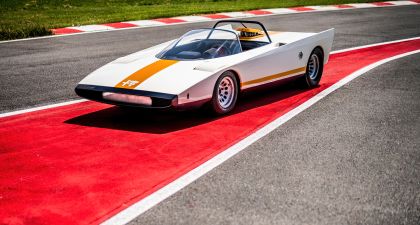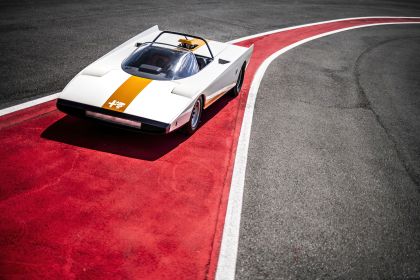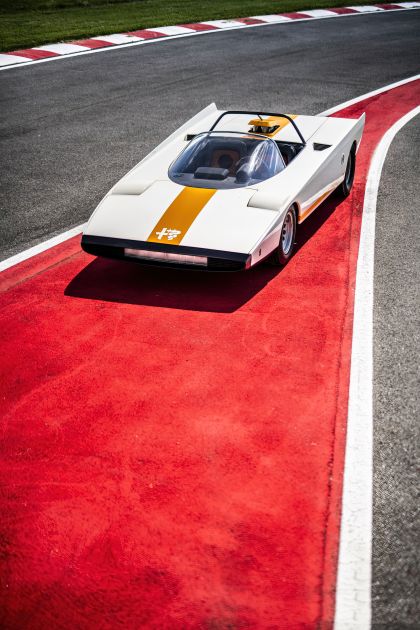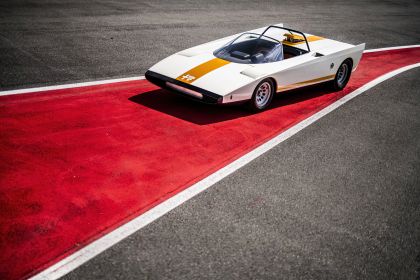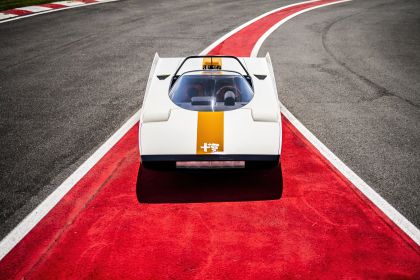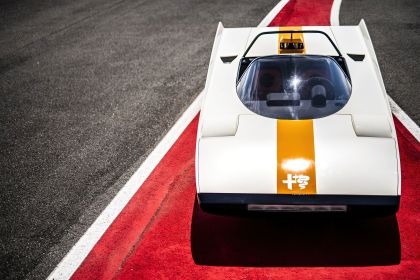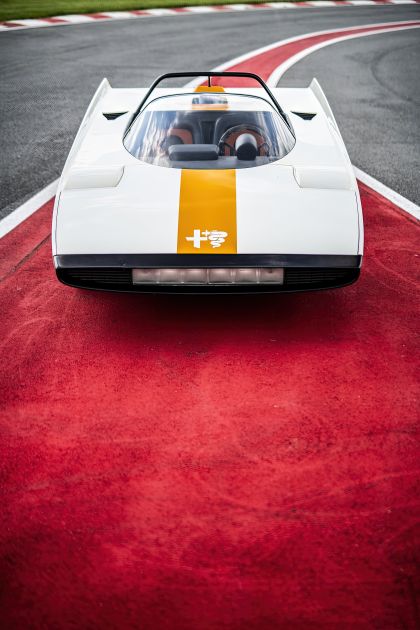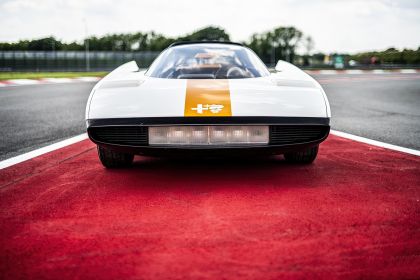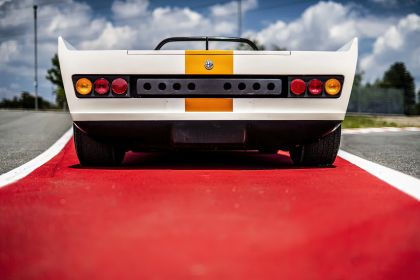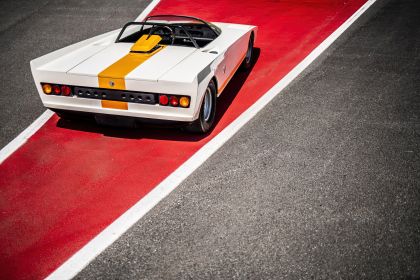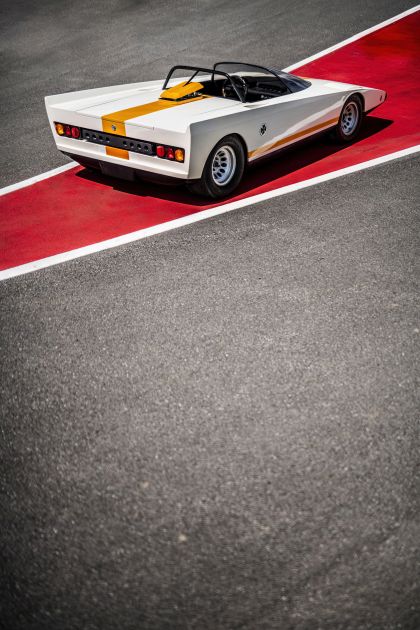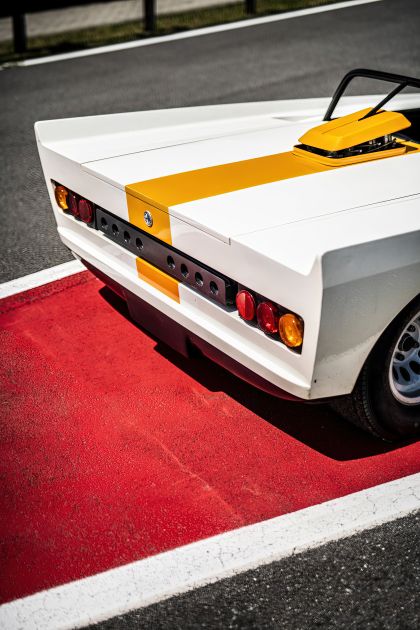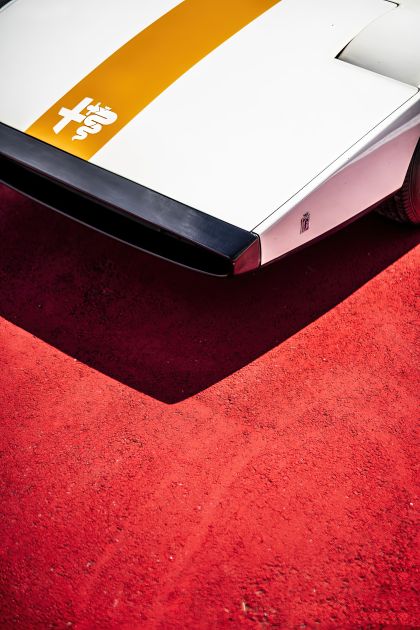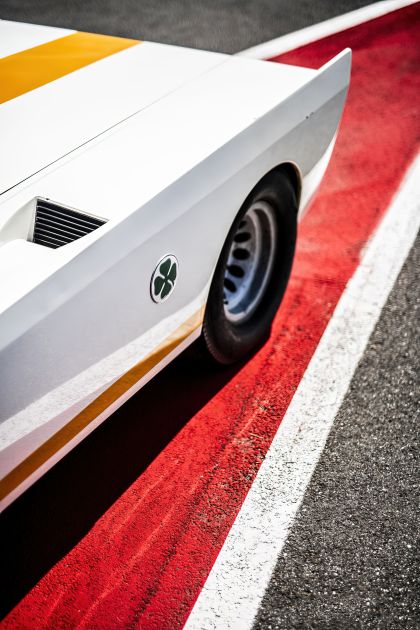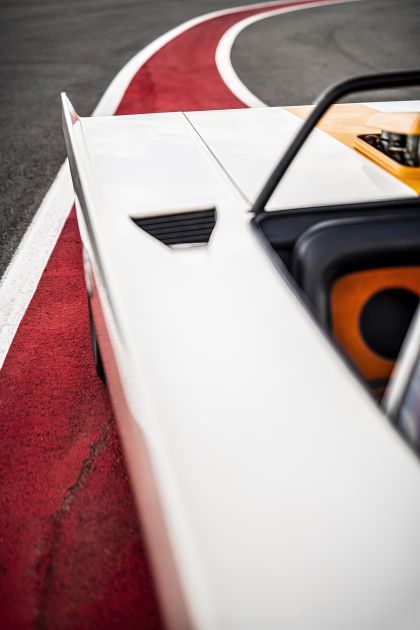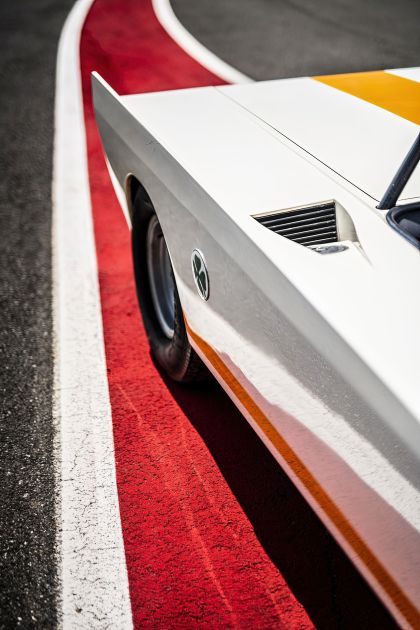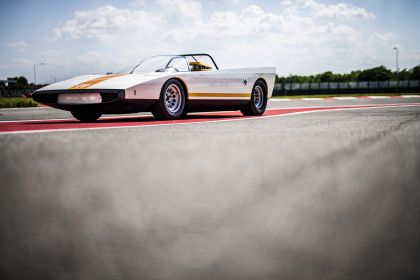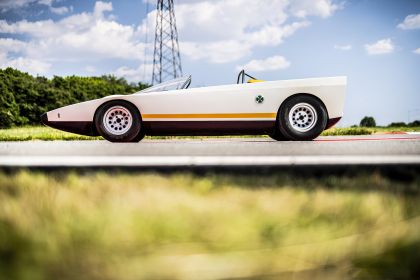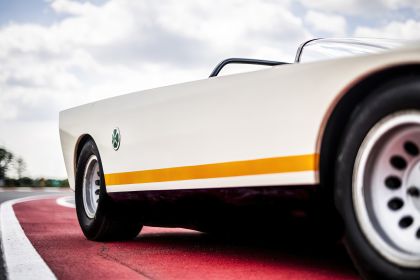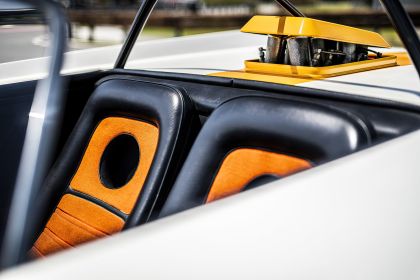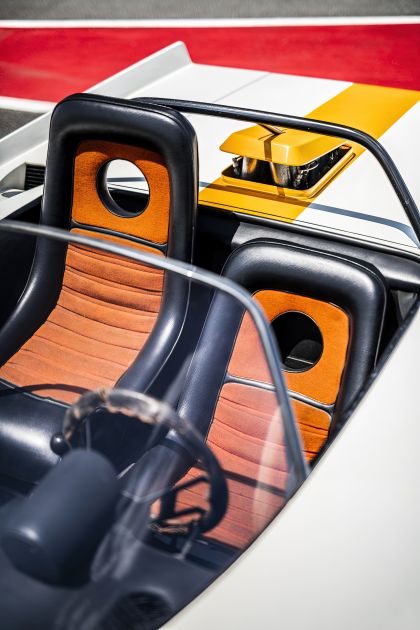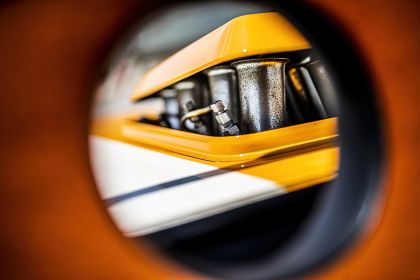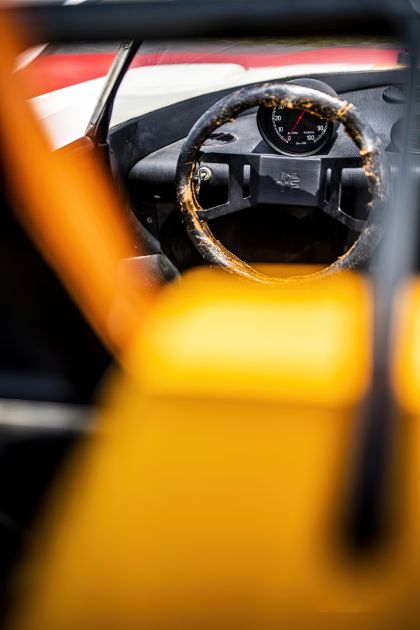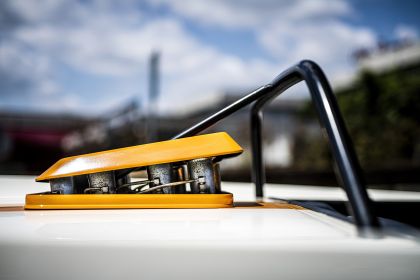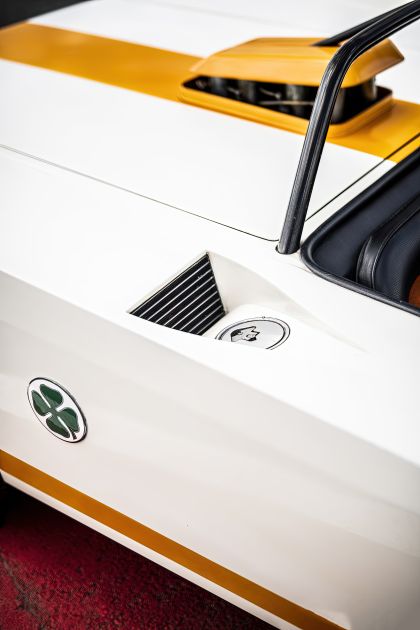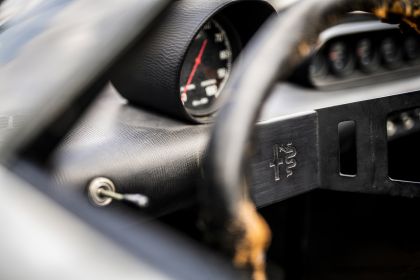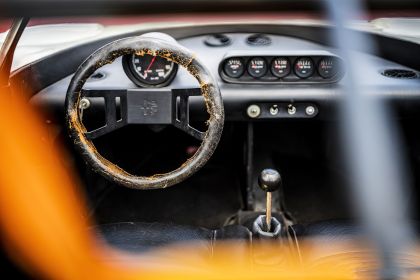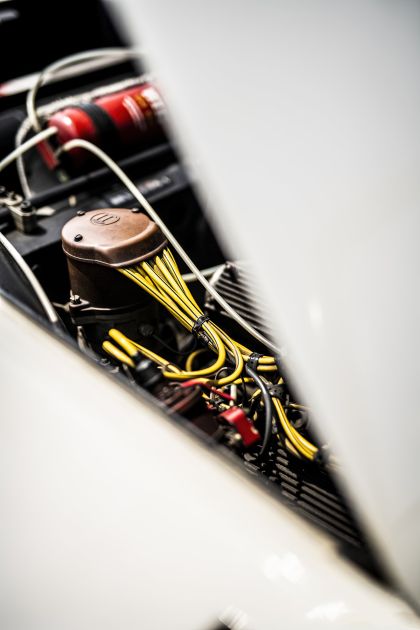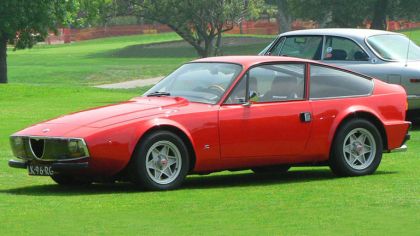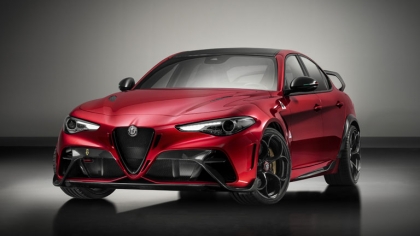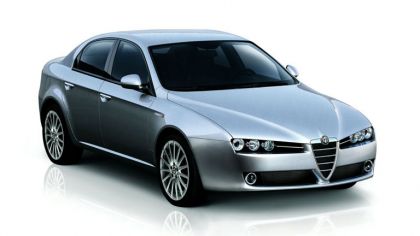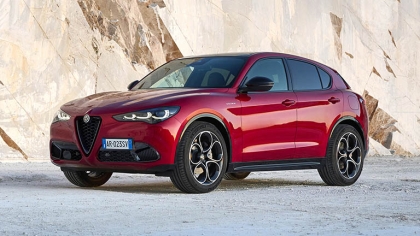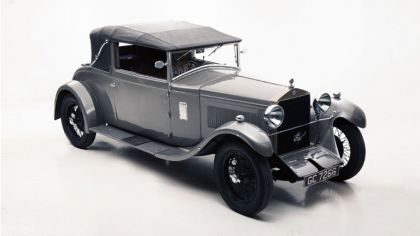The 33 Spider Cuneo was born in 1971, when the Pininfarina design team decided to 'play' again, after the success of the 33 Roadster in 1968, with the chassis of the magnificent Alfa Romeo 33.
Before the Cuneo spider, the Pininfarina atelier had already designed the 33 Roadster brought to the Turin Motor Show in 1968: an open-top two-seater that offered many original solutions. Notable features are the taut lines interrupted only by the wide curves of the mudguards, the unusual light signature composed of six aligned headlights 'drowned' centrally in the lower part of the front bonnet, the streamlined grille surmounted by an essential rubber bumper but, above all, a large orange spoiler that performs different functions: in addition to aerodynamic downforce, the inverted wing also houses the oil cooler and, with the wide drifts supporting it, creates a solid structure that also acts as a protective roll-bar.
The car was a great success, but suffered a similar fate to many concept cars of the time, which became true 'laboratory cars' for experimenting with further technical and stylistic solutions. This is precisely what happened to the Roadster which, after being dismantled, ideally returned to the drawing board of the designers, who were given the task of designing a new creature to astound the public at the 1971 Brussels Motor Show.
The new design took the lines of the previous roadster to extremes by eliminating all curves and reducing the bodywork to the shape of a perfect wedge. The few remaining roundnesses on the wing are hints that emphasise the width of the tyres, while the only truly curved part is the windscreen which, like a low, streamlined shell that wraps around like the visor of a helmet, rises slightly from the taut lines of the sides.
In the nose, the idea of the rubber bumper and the light signature with the light clusters merged into a single rectangle, now however brought to the centre of the low fairing grille in the lower part as well. The side is taut, clean, crossed only by an orange stripe, with the Pininfarina badge on the side of the front wing and a green four-leaf clover, symbol of the sportiest Alfa Romeos, on the rear. There are no doors: a sharp edge separates the vertical flank from the flat part that runs alongside the passenger compartment, where two NACA-type air intakes develop. The edge that draws the wedge rises slightly from the bonnet, creating a subtle fin that precedes the clean cut of the truncated tail.
The 'transom', i.e. the rear, is characterised by a black rectangle containing the six rear lights and the eight exhausts, each coming from a single cylinder: almost a reminder of motor racing. In the cockpit, the four-spoke, goblet-shaped steering wheel has only the rev counter behind it, the other circular instruments are grouped together in a row in the centre of the dashboard. Behind the seats, which pick up the orange colouring of the stripes on the bodywork, a thin tubular roll-bar supports the cover of the intake funnels.
As had happened with the 'donor' Roadster, the new Spider manages to surprise everyone, proposing a completely different and essential vision of the sports car concept. It is interesting to note how the 33 Stradale and the Spider Cuneo are extremely different, almost antipodal: you could say that where Scaglione used compasses and curvilinear lines, Pininfarina only used a square and ruler. But he wasn't the only one to do so: starting from that very prototype, the extremes of the taut shapes and wedge profile would be taken up by other designers over the following years.
The Alfa Romeo 33 Spider Cuneo is still perfectly preserved at the Alfa Romeo Museum in Arese and is in good company with many other 33s. In addition to the many competition versions that testify to the evolution and worldwide successes achieved, there are other coupés alongside Scaglione's splendid 33 Stradale: Bertone's angular Carabo designed by Marcello Gandini, which opens its doors upwards like the elytrons of a beetle; the ultra-low and streamlined 33/2 Speciale, made by Pininfarina to a design by Leonardo Fioravanti; the metallic iridescent Iguana, which came out of the pencil of Giorgetto Giugiaro and bodied by Italdesign; and, finally, the mind-blowing and futuristic Navajo, the latest dream car made on the basis of the Alfa Romeo 33 Stradale. With lines reminiscent of those of a spaceship, the car is the work of Bertone, who lengthened the wheelbase of the tubular chassis to improve roominess and accommodate an aerodynamic, boxy rear spoiler.
A selection of iconic concept cars representing a true concentrate of Italian flair and creativity, created as a variation on the theme of that authentic work of art called the Alfa Romeo 33 Stradale.
